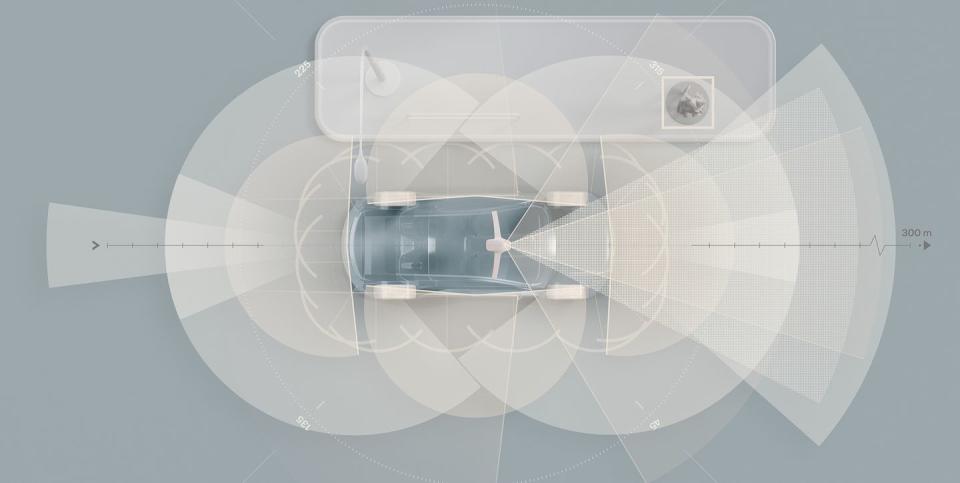Electric Volvo XC90 Will Get Lidar Standard

Volvo will offer Lidar in the electric version of the next-generation XC90 sport utility, which will be shown in 2022.
The advanced sensor suite in the XC90 will be part of a safety system package, but will also be used for Level 3 autonomous driving.
Volvo plans for half of its sales volume to be battery-electric by the year 2025.
A battery-electric XC90 is on the way, due to be unveiled next year as part of the Swedish automaker's plan to electrify half of its lineup by the middle of the decade, and it will pack plenty of new safety tech. One of those new bits of tech will be something quite unusual for a production car at the moment: a Lidar sensor mounted just beyond the top edge of the windshield.
Developed by Luminar, the solid-state Lidar bar will be part of a sensor suite aimed at reducing the risk of collision, risk that's expected to be reduced over time as software improves and is refreshed via over-the-air updates.
Lidar, an acronym for light detection and ranging, bounces laser beams off objects to measure the distance between itself and its surroundings, painting a three-dimensional picture of the environment. Software then uses that image to detect and address various objects in its path. Lidar sensors have come a long way in the past few years, not only in terms of hardware but in terms of price. Not long ago Lidar sensors on autonomous prototypes were large and bulky can-shaped sensors mounted on roof pods, spinning constantly to paint a 360-degree view of their surroundings. Forward-facing Lidar has now been miniaturized enough to peer through a narrow glass window on the roof, while the cost of the sensors has tumbled from as high as the mid five-figure range to the low four-figures.

 Yahoo Autos
Yahoo Autos 